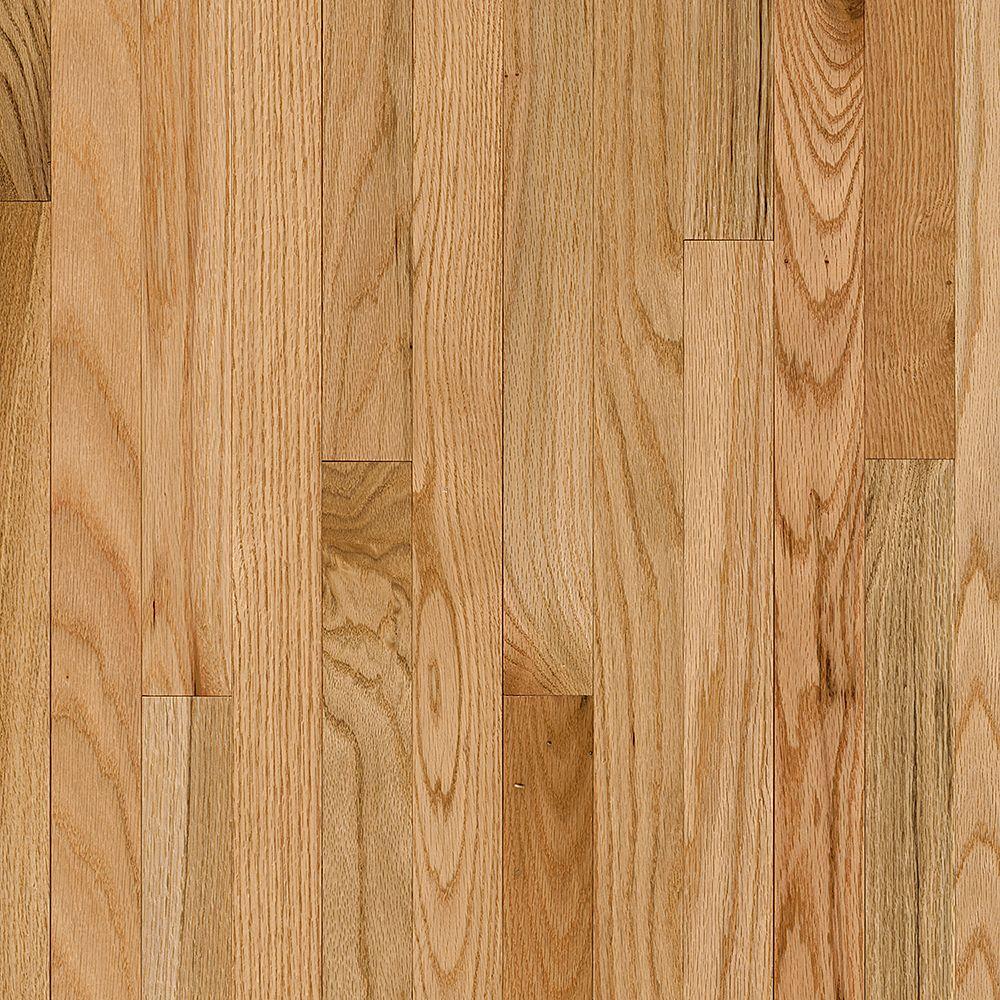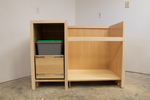We may receive a commission when you use our affiliate links. However, this does not impact our recommendations.

A view of the oak floor.
An old friend called me recently with a problem. He had coated a newly installed oak floor in a remodeled upstairs bedroom with oil-based polyurethane and it wouldn’t dry. It had been five days already and the finish was still very tacky. What was the problem he wanted to know?
I wanted to know, too. So I began asking questions because it would be extremely unusual for the problem to be a bad batch of the finish. Polyurethane should dry hard overnight.
It’s winter, so my first question was the obvious one: Was the upstairs bedroom heated? It was, but my friend lives in Florida and the weather had been warm during those five days. So he had left the windows open to hopefully reduce the odor from spreading to the rest of the house. He had also kept the bedroom door closed most of the time. Anyway, we determined that it wasn’t a temperature problem.
It took lots more questions and discussion before I realized what the problem was. (By the way, this is typical with finish problems; it’s rare that the person gives me the information I need at the beginning.)
So, about 10 minutes into the discussion, he told me that the paint store had instructed him to seal the wood with boiled linseed oil before brushing on the polyurethane. He had done that, brushing on the linseed oil and letting it dry overnight. Further questioning revealed that he hadn’t wiped off the excess linseed oil. He had left it, and next day he brushed the polyurethane right on top.
This was the information I needed. Boiled linseed oil not wiped off will take a very long time to dry. He had made an oil/varnish blend right on the wood. That is, the polyurethane had mixed with the not-yet-dry linseed oil. It’s as if he had brushed on a coat of Watco Danish Oil and left it without wiping off the excess. The finish would be tacky for weeks or months, maybe forever.
Linseed oil is a problem finish because of the mystique that surrounds it and its poor drying properties. Used properly, it can be a fine “in-the-wood” finish, but the proper application is not as well known as its reputation.
The paint store should not have suggested the use of linseed oil. Two or three coats of polyurethane would have worked just fine and been sufficient. Polyurethane doesn’t need a separate “sealer” coat.
Read more from Flexner on the compatibility of various finishes.
I suggested one of two remedies for the situation as it is, neither pleasant. One would be to wait until the mixture of oil and polyurethane hardens. I couldn’t say how long that will be. The other would be to strip off most of what’s there, wait a couple of days, then proceed with the polyurethane. For stripping, I suggested first trying with rags soaked with naphtha. If that didn’t work, I suggested rags soaked with acetone or lacquer thinner. If that didn’t work, he’d need to use a paint stripper.
With all of these solvents, he would need to open the door and put at least one fan in the window blowing out to exhaust the fumes. He should also open several windows in nearby rooms to provide replacement air. He could also wear an organic-vapor mask if he was unable to exhaust the fumes rapidly enough.
There was also the possibility of re-sanding the floor, but the tacky finish might gum up the sandpaper so quickly that it would lose its effectiveness almost immediately. It would be a possibility though.
Take control of finishing by learning how to use the many finishes available — and what those products actually are. In Flexner on Finishing, his first since Understanding Wood Finishing, Bob Flexner delves deeper into many of the issues woodworkers struggle with and he does it with an authority that leaves no doubt.
Here are some supplies and tools we find essential in our everyday work around the shop. We may receive a commission from sales referred by our links; however, we have carefully selected these products for their usefulness and quality.











Sorry for the delay responding. I didn’t see it right away. I have now tried to recreate your problem with only limited success. But I haven’t given my sample very long. Water-based finishes don’t bring out color as well as oil-based finishes, but I don’t understand why the color changed over time. That shouldn’t have happened. Fixing the three rooms you have done could be a real problem if the color problems are extensive. I doubt applying more stain on top would help, but you could try in a sample area. You could also try wiping with a rag dampened with acetone. It sometimes has weird corrective powers. It could also smear the water-based finish, so be careful. Pay attention to what is happening. As for the future in other rooms, don’t use the same products. Either replace the Minwax stain, which is notorious for drying too slowly, or replace the water-based finish with an oil-based polyurethane, though you probably can’t do that until it gets warmer. I’m sorry for not being a better help. I’d probably have to see it. Maybe there’s something you left out without realizing it.
Hi Bob,
I have a different problem with my floors. I sanded them down to the wood and applied a stain (Minwax Wood Finish Early American Oil-based Interior Stain). Then wiped off the extra. I waited a couple of days and applied 2 coats of Varathane Satin Ultra Thick 2X Water-Based Floor Polyurethane, waiting 2 days between.
The floors looked great for a few weeks. Then the color started to lighten. Now instead of a rich dark color, they are a brown that isn’t very attractive. Also they have really light colors along the seams and any cracks in the wood. I’ve done three bedrooms and have the same results. I don’t want to continue before I find out why this happened and how to fix what I’ve got.
thanks
Larry Click
Lakewood CO